Press


Beauty and Fashion Magazine, Autumn, 1983, front and back covers.
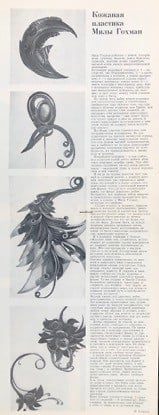
Irina Uvarova, "Leather Sculpture of Mila Gokhman," Dekorativnoye Iskusstvo (Decorative Art) #10, 1986, Moscow, pages 24-25 illus.
"There are people whose feelings are so sharp and refined that by merely touching an object they can see its color, its nuances invisible to the eye. Mila Gokhman feels this way. More than that, her creations are her self-portrait. Incomprehensibly but amazingly, they absorb her image and her spiritual world."
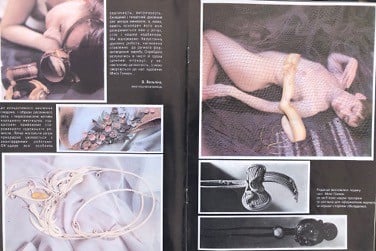
Veronica Volpina, "Meet the Master," Azbuka #2, 1994, Kiev, pages 32-33, illus.
Mila Gokhman, "Leather Jewelry," Azbuka #2, 1994, Kiev, pages 33-34, illus.
" She was a pioneer-discoverer of a number of directions in artistic leather processing, which today seem natural to us. The artist made a fundamentally new language, not borrowed from anyone, and developed a range of things that spoke this language. In addition to the usual exquisite leather utensils (cases, book covers), in addition to the usual leather bags and belts, Mila Gokhman came up with elegant jewelry: bracelets, pendants, brooches, rings. Not satisfied with this, she tried to reveal the decorative possibilities of leather in the panel, the unusualness of which can be compared only with their complexity. The composer works with tender attentiveness to every small piece of skin, every bend, every shade of color. And this attitude, not the value of the material, turns her work into a jewel." V. Volpina
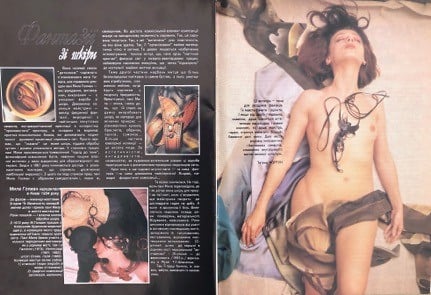
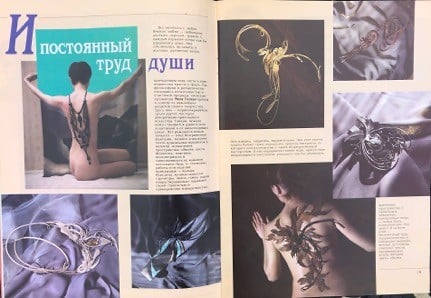
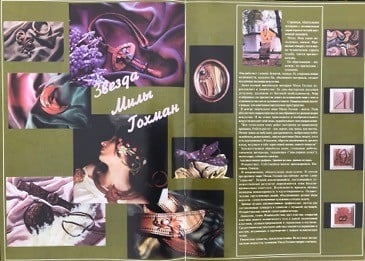
Anon., "The Star of Mila Gokhman," Business Club #1, May 1997, Kiev, pages 10-11, illus.
" For the sake of absolute expression of thought, she turns to different types of art. At the junction of applied and fine art she finds her own language, develops her own direction."
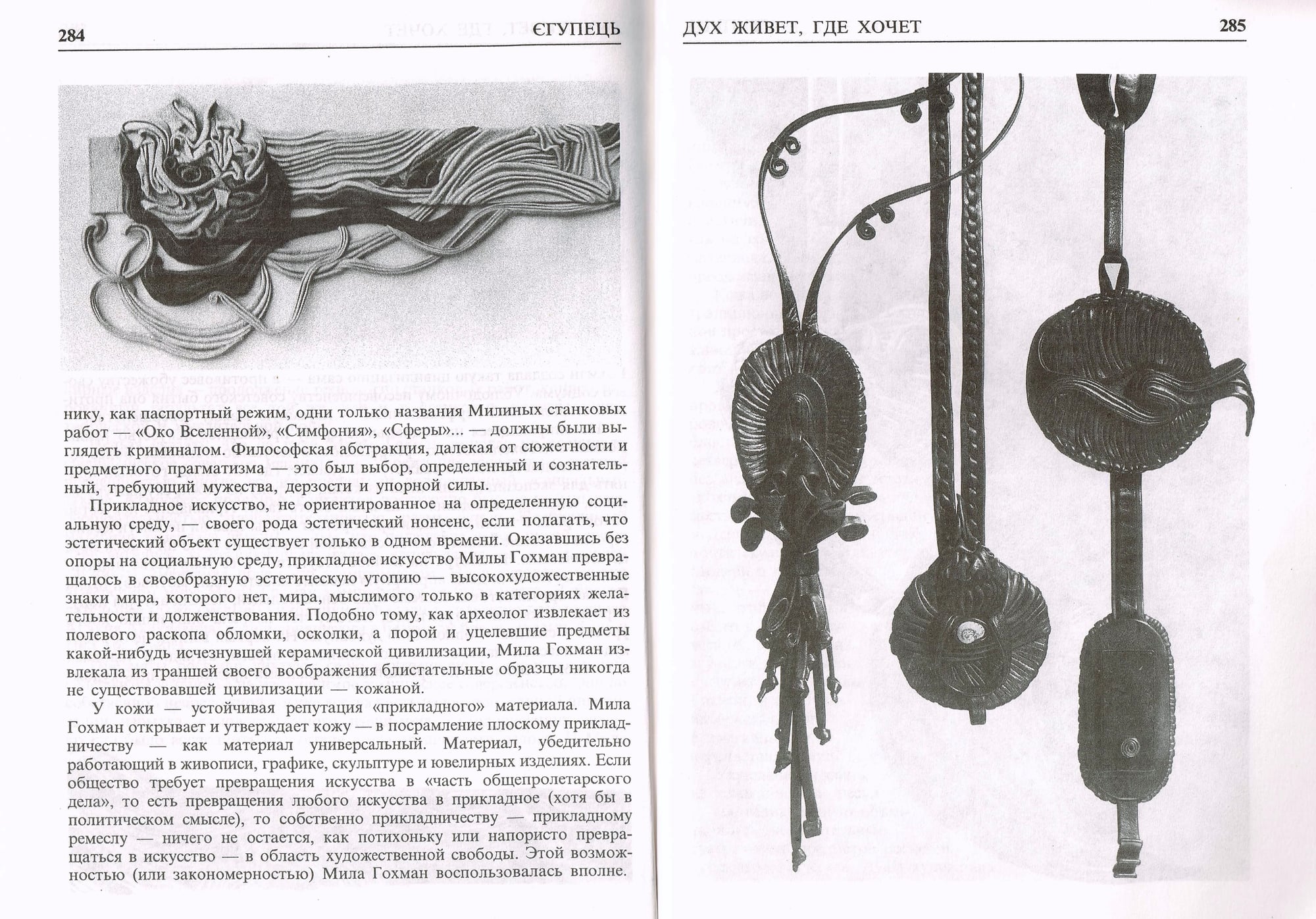
Ludmila Sverskova, "Spirit Lives Wherever It Chooses," Egupets Literary Almanac #4, Institute of Judaic Studies, 1998, Kiev,
pages 278-292, illus.
"Mila Gokhman’s resistance against the Soviet system was never in any way political. ... [She] stood against the system in much more substantial ways than authors of popular brochures and tracts, because she chose opposition of a different level and meaning – a spiritual opposition.... Under the conditions of Soviet life, when the principles of Socialist realism were mandatory, even the names of Mila’s panels -- Eye of the Universe, Symphony, Spheres -- looked criminal. Choosing philosophical abstraction required courage, daring and persistence."
"Phillip Ritchie & Mila Gokhmani [sic]," YouTube, July 22, 2011. Phillip Ritchie is a professional photographer based in Costa Mesa, California, who photographed Gokhman's work in jewelry, accessories, and design in 2011 and again in 2016-17.
 "Regional Report: Southern California," AICA (Association Internationale des Critiques d'Art) Online Newsletter, July 14, 2020, http://www.aicausa.org/news/regional-report-southern-california-and-hawaii
"Regional Report: Southern California," AICA (Association Internationale des Critiques d'Art) Online Newsletter, July 14, 2020, http://www.aicausa.org/news/regional-report-southern-california-and-hawaii __________________________________________________________________________________________________
 "Meet Mila Gokhman," VoyageLA, September 21, 2020.
"Meet Mila Gokhman," VoyageLA, September 21, 2020._________________________________________________________________________________________________


Roni Feinstein, "Artist Profile: Mila Gokhman," art and cake (online magazine), October 24, 2020.
_______________________________________________________________________________________________
 Roni Feinstein, "Introducing Mila Gokhman," blogpost, ronifeinstein.com, October 24, 2020.
Roni Feinstein, "Introducing Mila Gokhman," blogpost, ronifeinstein.com, October 24, 2020.Irene Katz Connelly, "How a Holocaust Survivor Thrived in an Art World that Didn't Want Her," The Forward, May 17, 2021.
